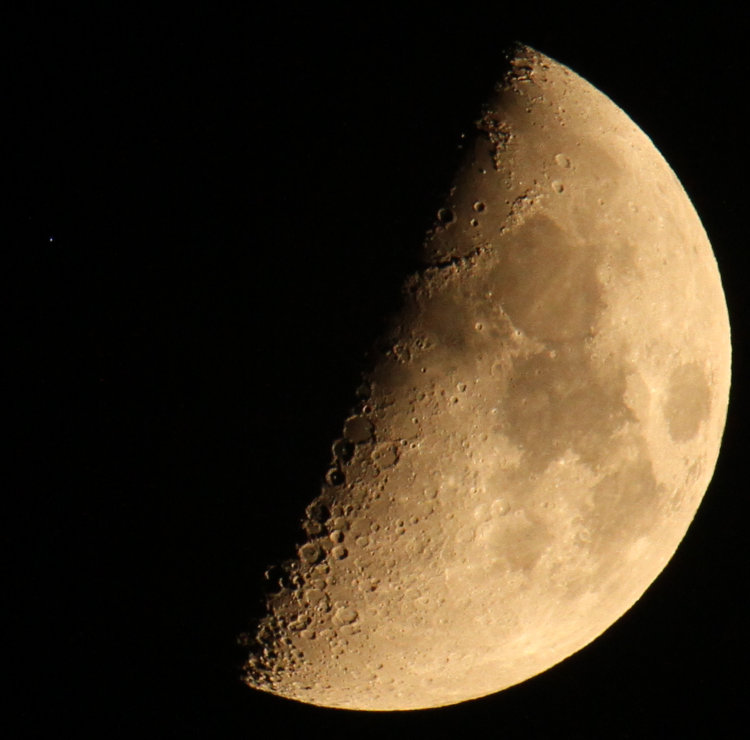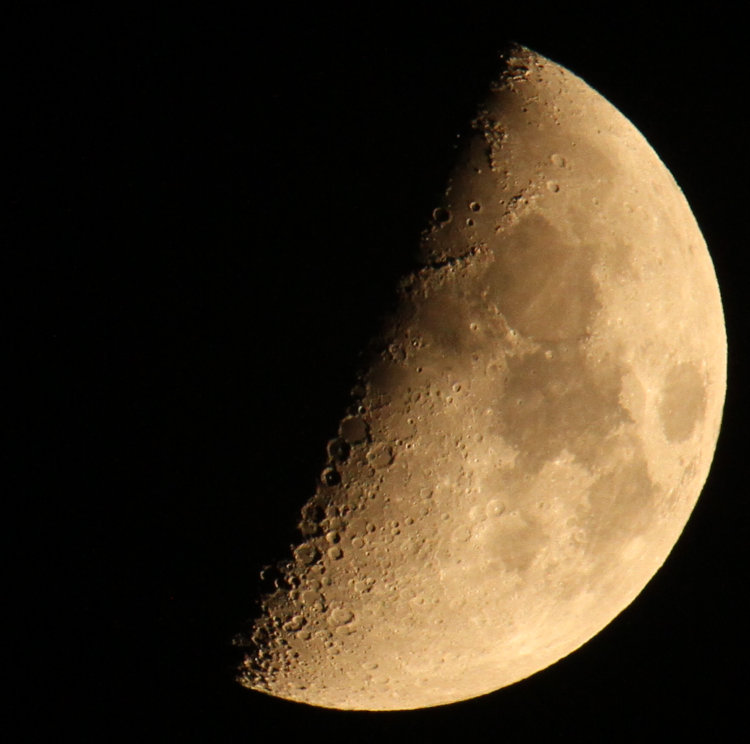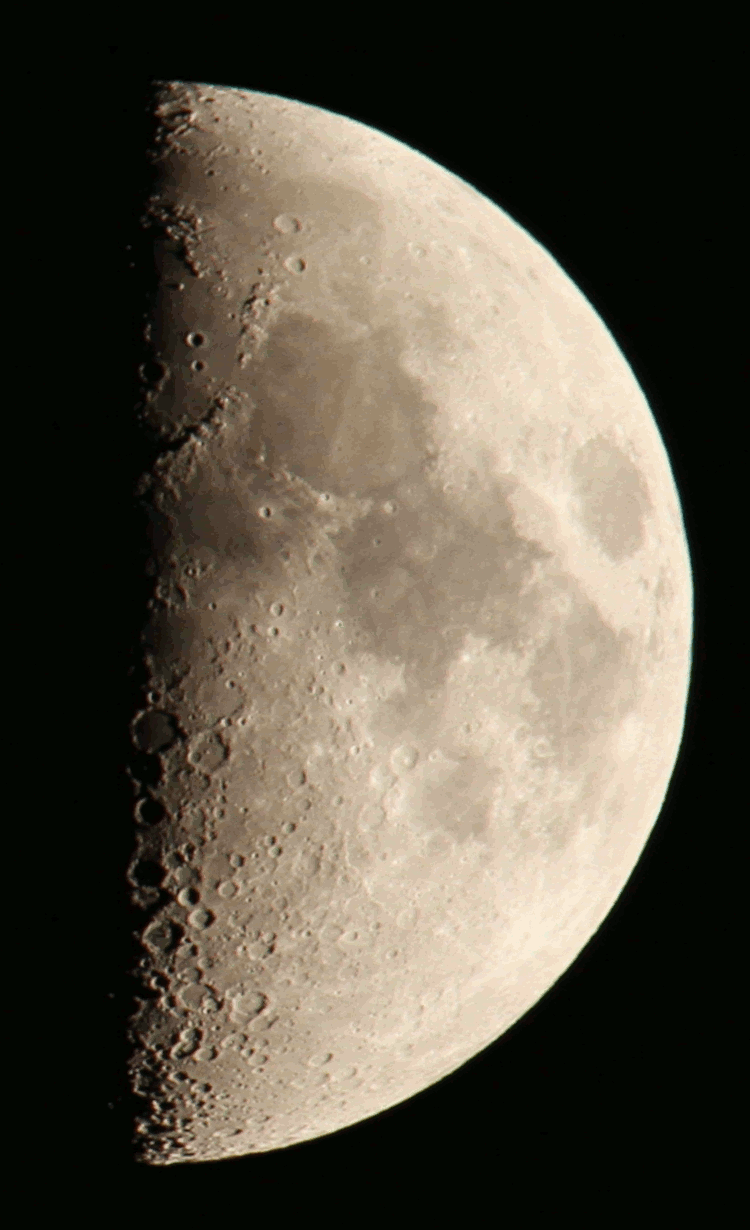
The conditions held and I did get out to watch Spica disappear behind the moon. I tried a short video clip, unable to tell if it was actually capturing Spica or not but suspecting that it wasn’t – the frame rates for video translate to a pretty short shutter speed and even as bright as it was in comparison, Spica was still pretty dim. Upon returning home, I found that I could indeed make out Spica in the video through its scintillation and should have tried it – except that the batteries were running a bit low and video absolutely trashes them, mostly through having the LCD on the back of the camera active constantly, and I was close enough to the event to not want to switch out batteries. All that said, you can see Spica up there as the little speck to the left of the moon, very close to the shadowed portion – as in, about five seconds from it.
Now, I was using mirror lockup as I said, so timing wasn’t really a thing even if I felt (which I didn’t) that my watch was perfectly synchronized to orbital periods and all that. I was waiting about five seconds after locking the mirror up before tripping the shutter to actually snag the picture, so watching for some telltale that it was about to happen wouldn’t work in the slightest. Even without the delay it wouldn’t have worked, because I was watching Spica in the viewfinder to see if I might make out it dimming or something and it simply winked out without warning. So the next frame is five seconds after that:

The sudden disappearance didn’t really surprise me, given that nearly all stars are so distant that they’re mere points of light to us no matter what telescope is used, but I’d hoped there might be a hint of something, especially if I could capture it. Nope.
But while we’re here, we’ll take a look at something that I said I might try.

The first image is the whiter one, taken at roughly 9 PM EDT, while the second is shortly before Spica skipped out, about 150 minutes later. Not only was the moon at a different angle, somehow I’d shortened the zoom down a bit from maximum for the second session and it was shot at 552mm, so I had to tilt and resize them to match – and I’m almost certain you’re seeing evidence of the moon’s libration, the faint wobble that it has as it orbits (watch the distance of the mares from the right side.) You can definitely see the advancement of sunlight along the terminator, as well as the softening of the shadows within some of the craters more towards the center of the sunlit portions. And yes, the color change was that noticeable, even though the moon was quite some distance from the horizon – atmospheric haze and thin clouds were the culprits I believe.
Overall, however, I’ll watch only for planetary occultations, because stars are too boring.



















































